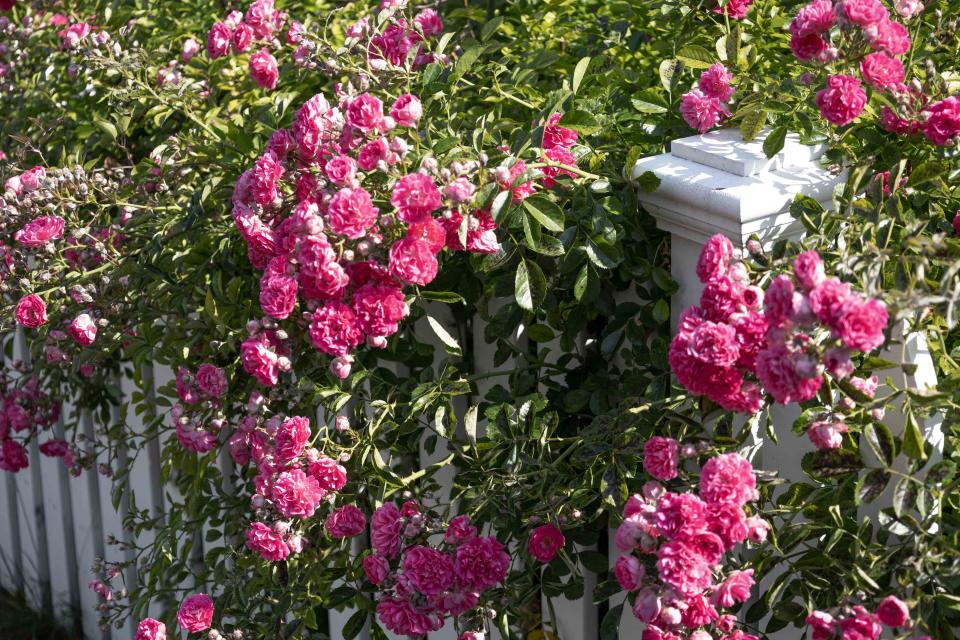5 Gardening Mistakes Almost Everyone Makes
And how to prevent and fix them.

Catherine McQueen/Getty Images
It’s easy to get excited about gardening. After all, while it’s a lot of work, it’s also incredibly rewarding. But growing a garden, whether it’s ornamental plants, flowers, or veggies, takes months. So, if you make a mistake, you might have to miss out until next season, which can be frustrating. By learning some of the most common gardening mistakes, you’ll be less likely to make them. Here are five gardening mistakes almost everyone makes—plus how to avoid them.
Related: 24 Easiest Vegetables, Fruits, and Herbs to Grow for Beginners
Placing Plants Too Close Together
Sara Bendrick, landscape contractor and Stihl USA spokesperson, tells me planting things too close to each other means there won’t be ample room for growth. “We all logically know that plants grow and most of us read the label when we buy them, but somehow it always happens that they get planted way too close, causing more maintenance over time. Many standard shrubs want to grow between three to five feet tall and wide, but we are planting too close together or on an edge of the path forcing odd pruning, shearing, or more maintenance.”
When you introduce a new plant to the garden, don’t be afraid to use a tape measure or ruler to help determine the proper distance. Check the plant's care tag and trust that the plant will likely grow to its full potential width and height.
Overplanting Different Types of Plants
It’s normal to be excited about growing your garden, but deciding what to plant can often be difficult. However, Bendrick tells me that adding all of those seeds to your cart generally doesn’t create the most aesthetic yard. “Planting too many different kinds of plants, this can be done artistically but most of us would do better off picking a plant palette and repeating it throughout the yard. When you have a garden full of main characters or too many different colors, textures, and looks—it often can look messy or a little too chaotic,” she explains.
Instead, Bendrick suggests going with five to ten plants depending on your yard size, and repeating them in swaths. “They will stand out better in grouping, especially from a distance, and give your yard a cleaner, more natural look.”
Picking Fast-Growing Trees
It can sometimes feel like growing your garden takes forever. But Benrick tells me that opting for fast-growing trees isn’t necessarily the best long-term move. “Although fast-growing trees are great for instant or near-instant gratification since they are often bigger in their containers, oftentimes they might be more trouble than it's worth if you don't plan for their full-size potential. We see clients all the time go for fast-growing trees, it often means you'll need to be hedging a lot to keep it in its place and at the scale that you want.”
Think of the old adage here: slow and steady wins the race.
Overwatering or Underwatering
The right amount of water is crucial for any plant to thrive, explains Marvin Magusara, co-founder of Retaining Wall Supplies. “Underwatering can stress the plants. Learn the certain water needs of your plants and check the soil moisture before watering. The general rule is to water less frequently but deeply. This encourages deeper root growth.”
Using Excessive Pesticides
While no one likes harmful pests in their garden, overdoing it with pesticides could end up causing other problems in the long run. “Overusing the chemicals can harm the beneficial insects; this also leads to pest resistance and impacts the health of plants and soil. Instead, use organic and natural alternatives and focus on preventative measures such as companion planting and encouraging the beneficial predators,” he explains.
For more Real Simple news, make sure to sign up for our newsletter!
Read the original article on Real Simple.


